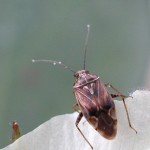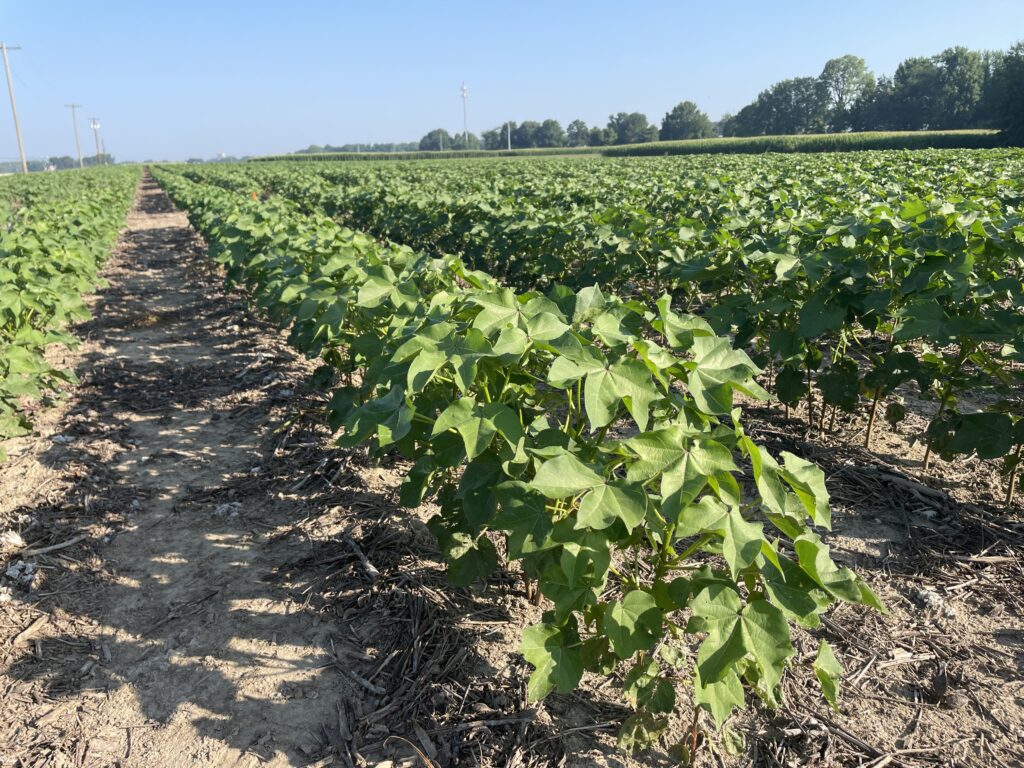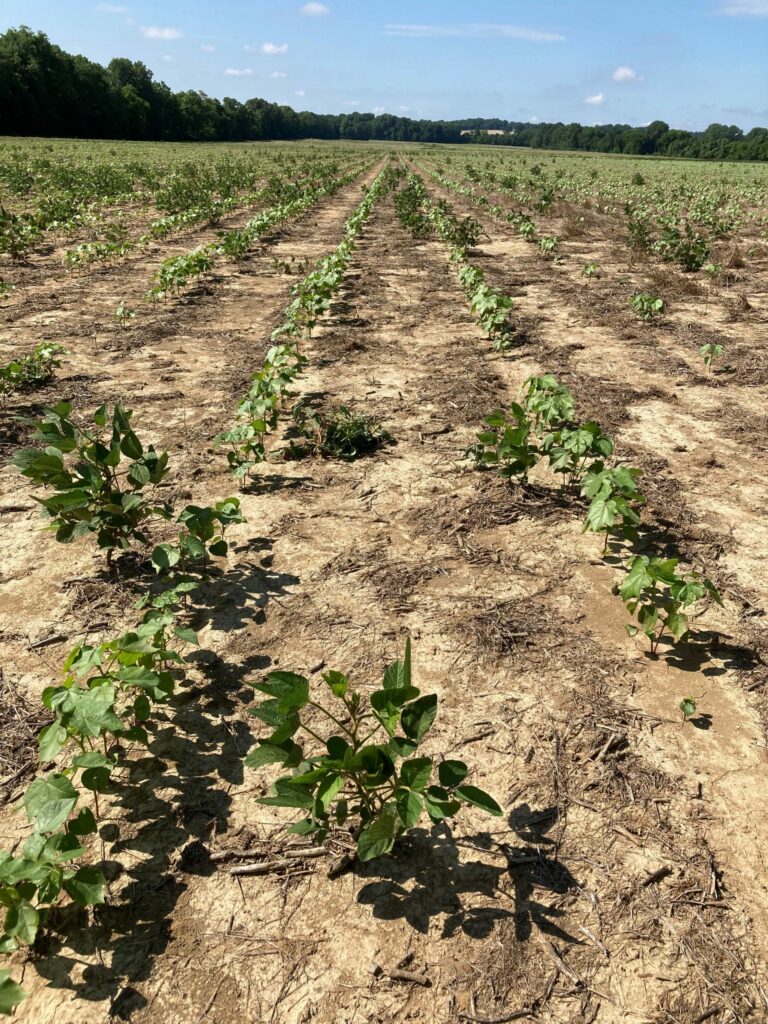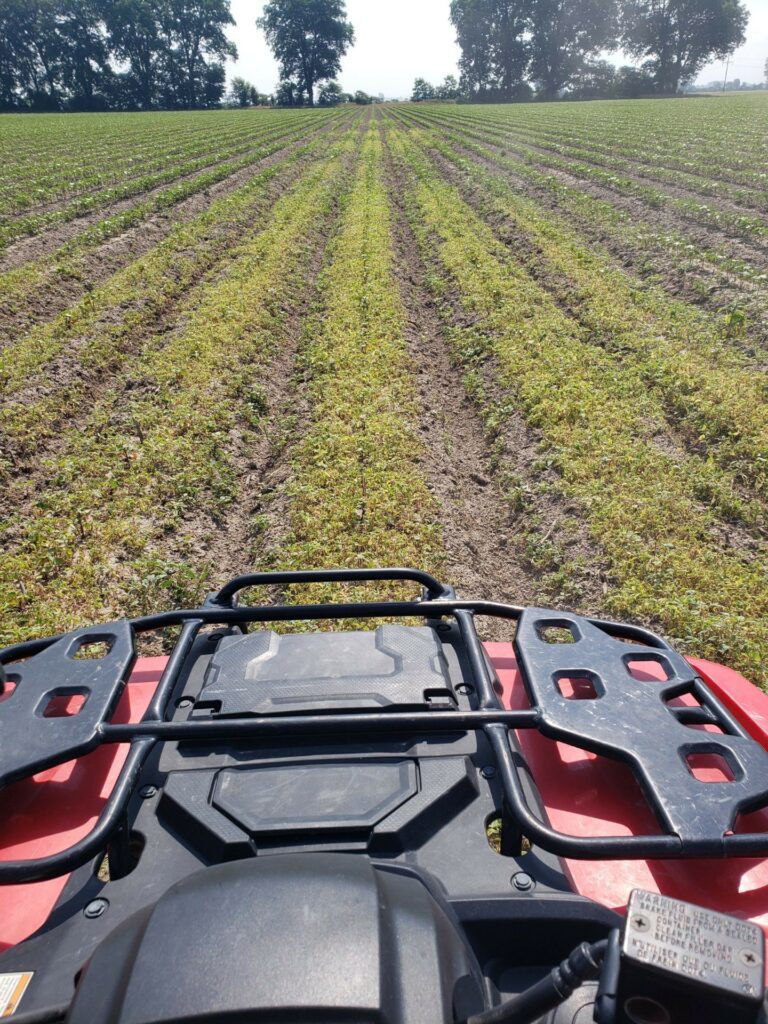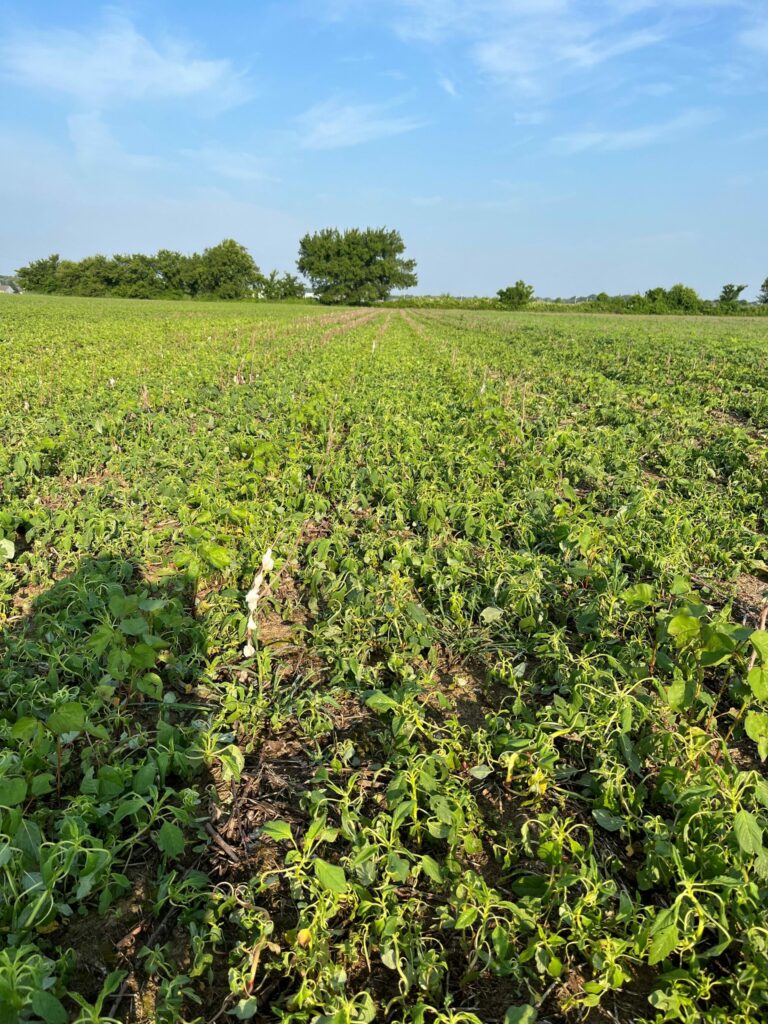I’ve received several phone calls about spider mites increasing in cotton around West Tennessee. Spider mites favor hot, dry weather and will often become an issue after plant bug applications are initiated. UT recommends treatment when 30-50% of plants are showing signs of injury and spider mites are still present. Treatment options are fairly limited and most are mite specific. Abamectin based products are typically the first option because they are economical and effective. There are a couple different formulations of abamectin that are different lb/ai per gallon products. Below is a rate conversion of 0.15 lb ai/gallon formulations (Willowood Abamectin 0.15 EC, etc) to 0.7 lb ai/gallon formulations (Agri-mek SC 0.7, Willowood 0.7 SC, etc).
5.0 fl oz/a = 1.0 fl oz/a
7.0 fl oz/a = 1.5 fl oz/a
8.0 fl oz/a =1.75 fl oz/a
10.0 fl oz/a = 2.0 fl oz/a
Abamectin rates below 7.0 fl oz/a or 1.5 fl oz/a should be avoided due to potential resistance issues and the increased likely hood of retreatment.
Other mite products such as etoxazole (Zeal, Stifle) are mite growth regulators that work very well but are more expensive and somewhat slower than traditional miticides. Fenpyroximate (Portal) is a contact miticide that has a shorter residual than abamectin or etoxazole but works very well. Bifenthrin alone is not an adequate miticide and should be avoided.
Products used for controlling plant bugs, bollworms and stink bugs (OPs, pyrethroids) exacerbate mite populations and their use, especially during hot dry conditions, should be delayed until after bloom if possible. Mite populations can rebound quickly after miticide applications so diligent scouting is critical to slowing the spread of mites across a field.
One final note, I’ve received a few questions/observations of spider mites appearing to be worse in ThryvOn vs non-ThryvOn cotton. Based on what we know about the repellency or reduction of colonization of Western flower thrips and Tobacco thrips in ThryvOn varieties, it is very plausible that spider mites could appear sooner and be more severe in ThryvOn cotton. Adult and immature thrips are spider mite predators and can help keep mite infestations in check under optimum conditions. ThryvOn’s Bt trait reduces thrips numbers season long and may increase the likelihood of spider mite flare ups as the summer progresses. Keep a close eye on your cotton, especially ThryvOn for mites.


